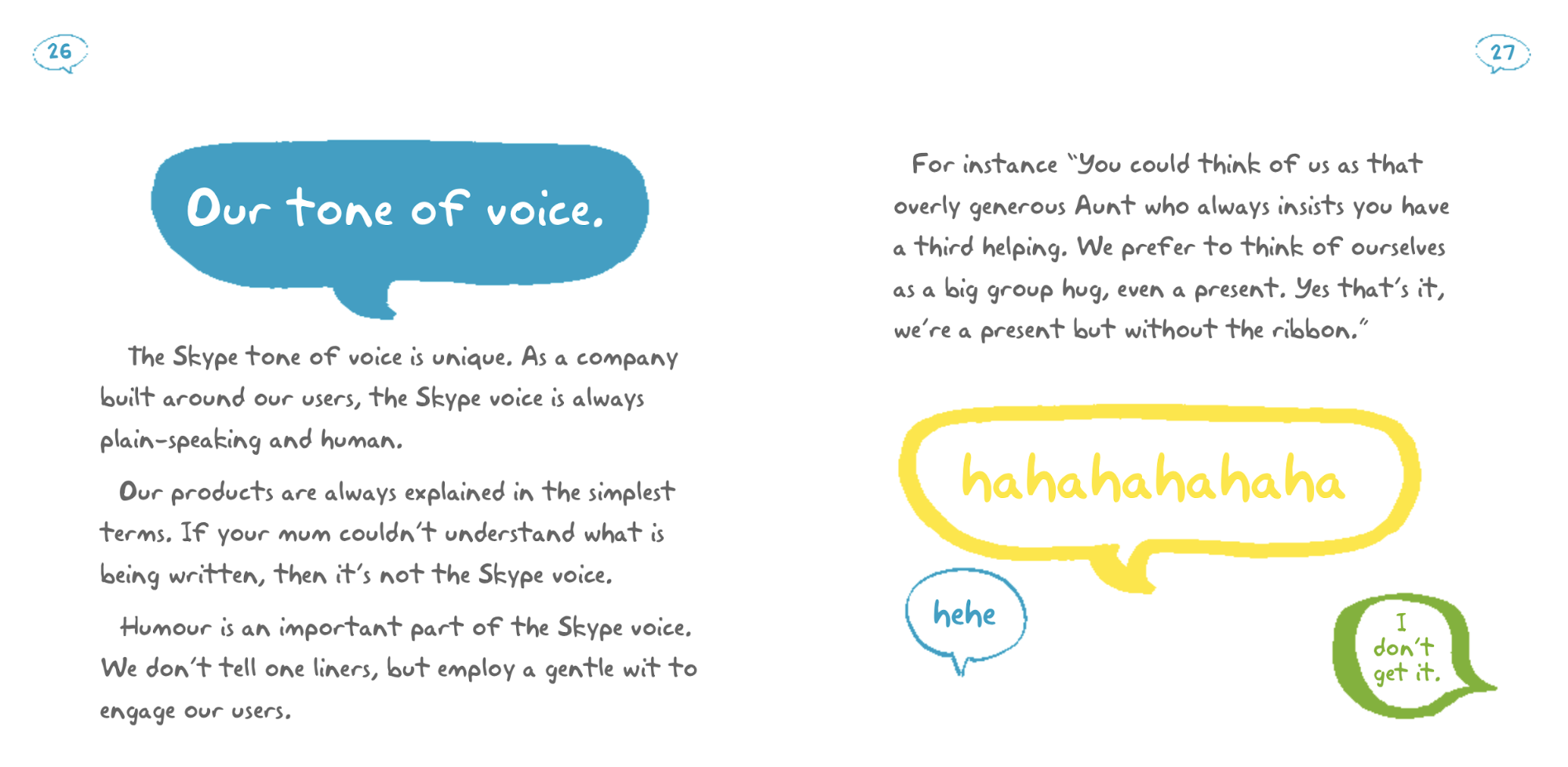Almost every enterprise organization has traditional brand guidelines in place, but they don’t always account for some of the unique challenges and considerations posed by email design.
Couple this with the fact that more and more enterprise marketing orgs are shifting to decentralized and distributed team structures, in which central brand teams no longer have eyes on every email that goes out the door (i.e. full brand control), and you have a heightened risk for off-brand emails.
Whether you’re creating email-specific brand guidelines from scratch or adapting your existing guidelines for email, let’s talk about how to create fantastic brand guidelines with email in mind.
Remember, adaptation is an iterative process, so it’ll get better over time!
Components of Quality Email Brand Guidelines
There are five key components to exceptional email brand guidelines and we’re going to examine how to flesh them all out. Don’t hesitate to tweet at us @stensul if you have any questions!
Protect Your Logo
There’s no better place to start than with your brand’s primary identifier: its logo. You can’t slap it on everything you see like Bart Simpson with a label gun.
Your brand guidelines must ensure that your logo is handled with strategy and care. Start by explaining the idea around your logo’s conception, structure, and its components that provide context to why the mark is so important.
Once people understand the meaning behind your logo, they need to know how (and how not) to use it. The more detailed logo usage scenarios you can lay out here, the easier it will be for people to follow.
Questions your email brand guidelines should answer:
- How much padding and white space should I use around my logo?
- What is the smallest and largest logo dimensions I can use? Don’t forget to include units!
- Are there secondary logos? When can I use them?
- Where in the email can I place the logo? Footer? Header? Body? Provide photo examples.
- How should I align the logo in relation to other content pieces?
- What should I absolutely NOT do with the logo?
Standardize Typography Styles That Everyone Can Read
Most brands utilize primary, secondary, and oftentimes tertiary typefaces for different mediums and scenarios. It’s integral to use web-safe fonts that are supported across devices, operating systems, and email clients so that your email renders well for everyone who receives it.
Web-safe fonts include:
Most Safe: Arial, Helvetica, Times New Roman, Courier & Courier New
Safe Font: Palatino, Garamond, Bookman, Avant Garde
Windows and MacOs Safe Fonts: Verdana, Georgia, Comic Sans MS, Trebuchet MS, Arial Black, Impact

Need more help? CSSFontStack shows all the web-safe fonts and if they are compatible with both Windows and Mac operating systems.
If a non-web friendly font is integral to your brand, you may consider converting sections of your email to an image file, also known as graphical text. But be aware that some images may be blocked on some devices.
In your brand guidelines, lay out what font sizes, weights, and colors are used for the following email elements:
- Header text
- Preheader text
- Body Text
- Call-to-Action
- Signature
- Opt-Out Text
- Links
Brand Colors: 5 Shades Are Better Than 50
Colors are a psychological tool for communicating the quality and mood of your brand. When used consistently, customers form strong associations between your brand and the colors you use to represent it. There’s a reason why most fast food chains are red, while the most popular social media platforms are different shades of blue.
Aside from the aesthetic and psychological benefits to choosing the right colors, marketers also must ensure that their emails are readable. A great place to start is by checking your contrast ratios and following the Web Content Accessibility Guidelines (WCAG).
If a marketer thinks a hot pink CTA with white text is the right move, you can stop them in their tracks and instead of insulting their awful taste in design, kindly let them know that designs with poor contrast ratios are hard to read and kill your click-through-rates.
To prevent any further mistakes, answer these following questions in your brand guidelines:
- What are the RGB, Hex Codes, and Pantone Colors of your brand colors?
- What is the purpose of each color?
- When should I use each color?
- Where can I make sure that the contrast ratios are accessible?
Speak Your Voice (louder for those in the back)
While not every brand can (or should) replicate Wendys-esque sass on Twitter, establishing a clear voice brings consistency and clarity in communicating your brand’s personality.

Are you all-business? Or are you hipster-savvy? Happy-go-lucky or self-deprecating? Opinionated or neutral? Illustrate your brand’s voice like how Skype does excellently here:

Wherever your brand stands, describe the tone of your voice to help the people creating your emails write copy that’ll strike the right chord with your audience.
Questions your email brand guidelines should answer:
- What are 3-5 adjectives that describe the brand’s tone and voice?
- What phrases and industry jargon should I avoid at all costs?
- To emoji or not to emoji?
- How long should my subject lines be?
- What “from name” should I be sending my emails as?
- How do I greet my email readers?
- How do you close out my emails?
- How many words should I use per email?
Images and Dimensions
Now let’s make your email pretty. You don’t want to throw up images for the sake of adding rich media, especially if they’re meme-worthy stock images. If you don’t have a content library or image DAM, check out pexels or pixabay for a full library of free HD images.
Questions your email brand guidelines should answer:
- What format should I upload my images as? Gifs? Pngs? Jpegs?
- What is the biggest file size I can use for each image? How do I optimize large images?
- Where can I find the images to use?
- What subject matter should I include in the images (portraits, landscapes, animals, etc)? Which should I avoid?
Common Mistakes in Branding Emails
We know you’ve probably got this all down to the T, but there are a few common mistakes that we see all too often.
Mistake #1: Too much rigidity
Expressive brands should be…well..expressive. Overly stringent guidelines can, in fact, stifle innovation and brand relevance.
Mistake #2: Designs are not functional nor accessible
There’s no point in creating a beautiful email if it’s not practical. Guidelines should serve more than aesthetic purposes, and set guardrails to create both beautiful and functional emails.
Mistake #3: Emails are too image-heavy
We’ll cover email deliverability in greater detail in future blog posts, but if over 40% of your email is graphic images over text, there’s a high chance that your email will be flagged as spam.

Brand Guidelines in Theory vs Practice
Now that you’ve crafted a beautiful brand guide, let’s talk about the next big mountain to climb: implementing brand guidelines across your organization and ensuring that they’re adhered to.
We can’t promise you it’ll be easy, but here are a few tips for how to get it done.
Initiate Buy-in
The first hurdle is garnering firm company-wide acceptance that these new email brand guidelines will be enforced across all teams. Demonstrate to leadership teams the improved efficiency of a design-driven organization. Put on your intrapreneurial hat and close the deal.
Plan for Persistent Enforcement
The second challenge is ensuring that teams are adhering to your brand guidelines. Do so by requiring a thorough review of the guidelines as a part of onboarding programs for relevant new hires. Using a platform like stensul can make life a million times easier by automatically enforcing brand guidelines so that you don’t have to do it manually.
Structure Review
Remember, the whole purpose of having brand guidelines is to shorten the review process and scale up content production.
Establish clearly defined review and approval processes to ensure your brand guidelines act as a North star that keeps everyone moving in the right direction as opposed to being a bottleneck!

Why stensulers have it easy
Why do stensul customers have it easy when it comes to brand guidelines?
Well, most businesses are stuck in the past with email generation. Brand guidelines are poorly implemented across their organization, especially when it comes to email. With stensul, your brand guidelines are pre-configured in the platform, so that anyone can create on-brand emails in minutes. Want to learn more? Schedule time with our team to get the details.
That’s it from us now! If this guide was helpful, please let us know by sharing this article with your coworkers and friends. If you have any questions, please don’t hesitate to tweet us @stensul, we read every tweet!




